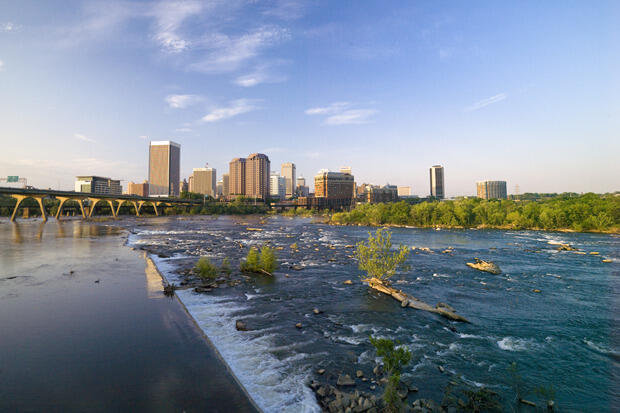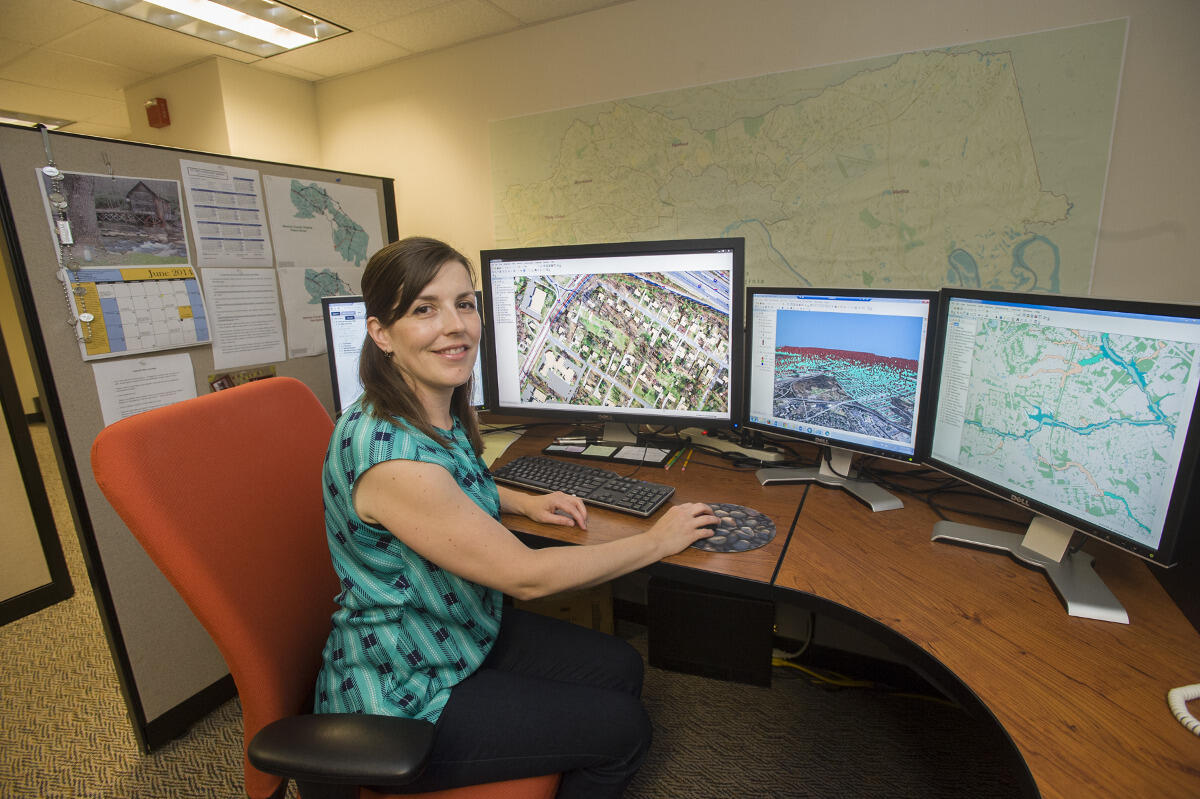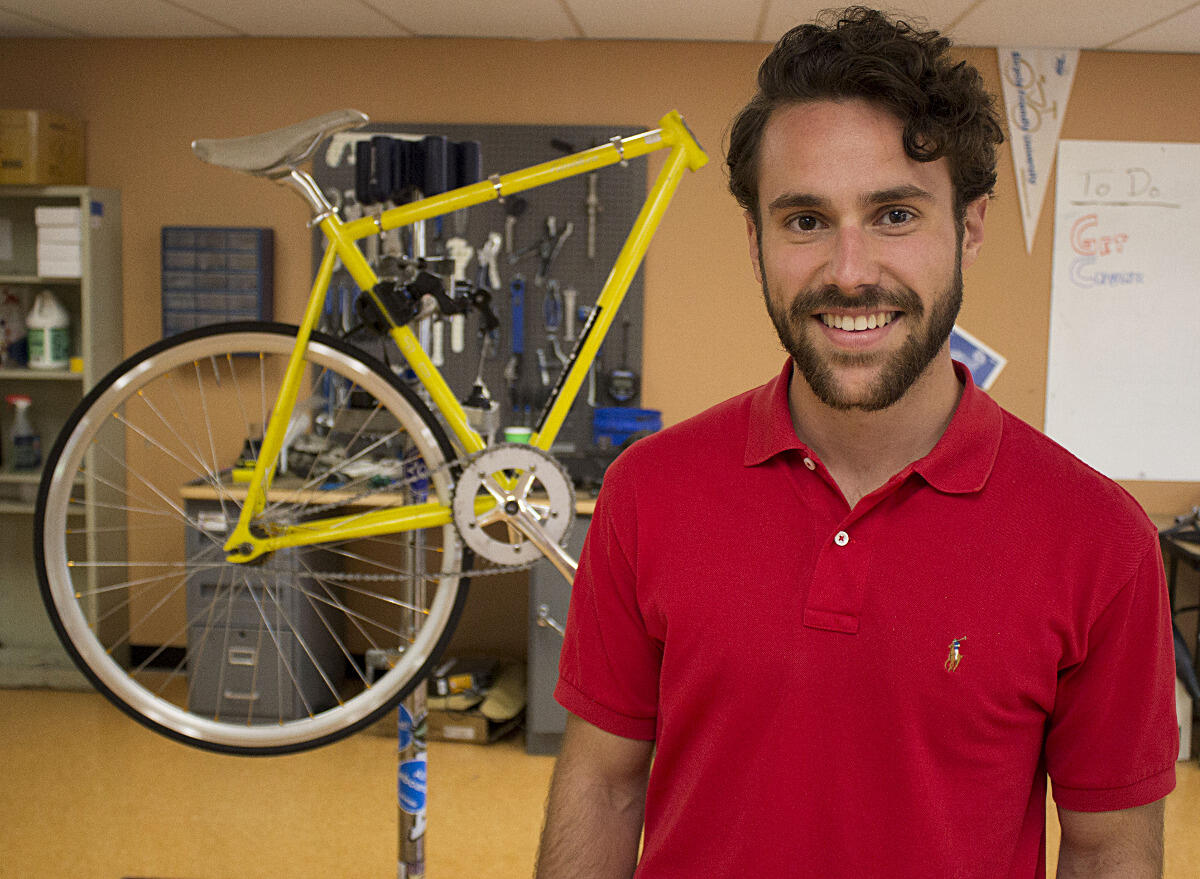
<br>Photo by Allen Jones, University Marketing
Nov. 1, 2016
VCU tackles urban runoff pollution through EPA grant
Share this story
When the rainclouds open up, the built environment of Richmond moves rainwater away from buildings and streets — but at the same time sweeps surface pollutants into the James River. Oil, gasoline, fertilizer, pesticides and animal waste are swept into the city’s stormwater drains by water flow.

“Urban runoff pollution happens where there’s a large rain event,” said Jennifer Ciminelli, research and data coordinator for the Center for Environmental Studies and Rice Rivers Center. “Because this area is so impervious, no water is penetrating through the ground and filtering through the natural processes.”
To address water runoff pollution, VCU’s Center for Environmental Studies will partner with Armstrong High School students on a high-tech project to map an area spanning the Monroe Park and MCV campuses and neighborhoods in between, and develop a green infrastructure plan. The study is supported by a $59,773 Environmental Protection Agency grant.
VCU is the only awardee in Virginia, and one of only 22 nationwide. Greg Garman, Ph.D., director of the center, is principal investigator and Ciminelli is co-PI.
The project will partner with VCU’s Office of Sustainability, Rice Rivers Center and Division of Community Engagement. The neighborhood associations of Carver, Jackson Ward and Monroe Ward, and the Richmond Department of Public Utilities and Richmond Public Arts Commission, will provide support.
“The stormwater and sewer water go into the same pipe, which is true in a lot of older cities such as Richmond,” said Wyatt Carpenter, sustainability project coordinator in the Office of Sustainability and staff support for the grant.
Since people are swimming in, fishing from and recreating around the river, “It’s a public health concern, as well as an environmental concern,” he said.
It’s much more effective to broaden your scope so you can have the maximum impact on the problem you’re trying to solve.
Researchers will get the project underway by using geospatial technology to map stormwater issues. That information will be shared with Richmond community members, whose feedback will help guide the final greening plan.
“We are one community. It’s much more effective to broaden your scope so you can have the maximum impact on the problem you’re trying to solve,” Carpenter said.
At the same time, educational modules on related topics including GIS technology, watersheds, public health and stormwater management will be developed for use in Richmond City Public Schools.

Armstrong students will help develop an application through which the public can identify different neighborhood features, such as areas that flood in downpours and vacant lots that could house a community garden or artwork.
“What we want people to do is provide their input using the map. The public can click on the map and note ‘this is an open lot. It’s been vacant, it would make a great urban garden,’” Ciminelli said. “We’re going to look at this as one contiguous area because VCU is part of this community. We’re going to go to the neighborhoods and say, ‘How can we make this better?’”
Ciminelli said rain gardens, green roofs, urban bioswales and use of pervious paving materials that allow rain to soak into the ground are good examples of green infrastructure that help to reduce stormwater pollution. On campus, you can find a rain garden outside Harris Hall, while the Pollak Building has an accessible green roof.
“Often underserved communities in our nation’s cities face disproportionate impacts from pollution, and too often they lack the resources to do something about it,” Joel Beauvais, EPA deputy assistant administrator for water, said in a statement. “EPA provides support to empower these communities to improve the quality of their waterways and to help reconnect people and businesses with the water they depend on.”

The community-driven plan will identify priority locations for green infrastructure projects, recommend best practices to reduce runoff pollution and identify funding sources to foster action.
“When you take a watershed approach to stormwater management, as we have done with this project, arbitrary lines like campus or neighborhood boundaries disappear because it is in everyone’s best interest to protect the human and ecological health of our watershed,” Carpenter said. “Hopefully this program will help break down some of those barriers, and help people understand how what happens on their property impacts the James River and the Chesapeake Bay.”
Subscribe for free to the weekly VCU News email newsletter at http://newsletter.news.vcu.edu/ and receive a selection of stories, videos, photos, news clips and event listings in your inbox every Thursday.
Subscribe to VCU News
Subscribe to VCU News at newsletter.vcu.edu and receive a selection of stories, videos, photos, news clips and event listings in your inbox.









